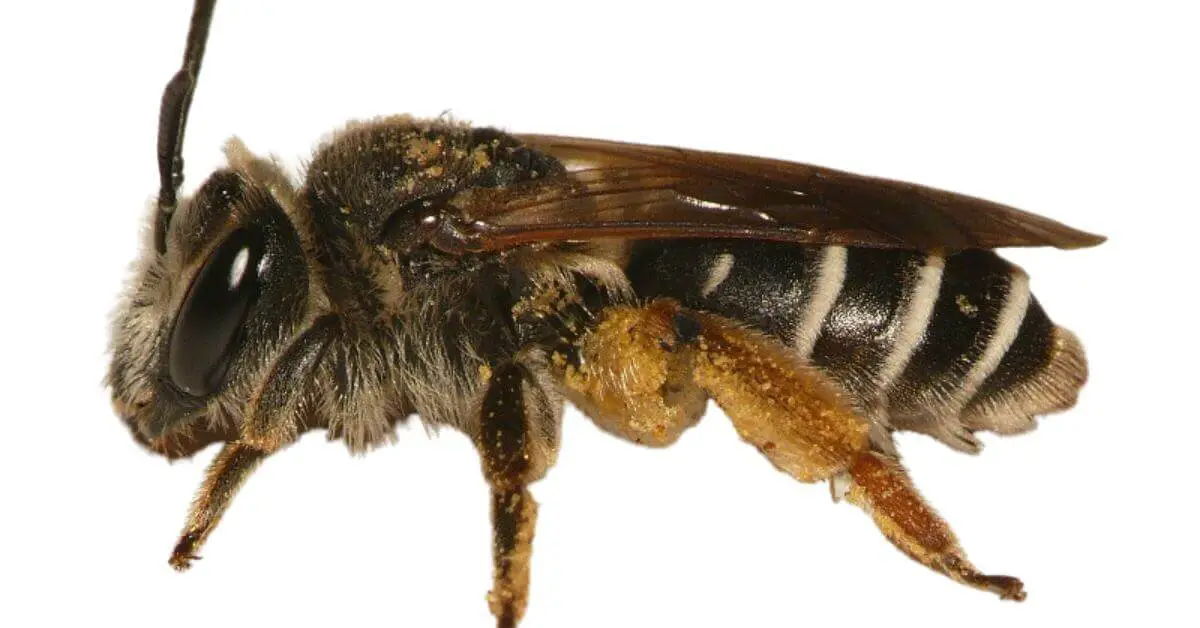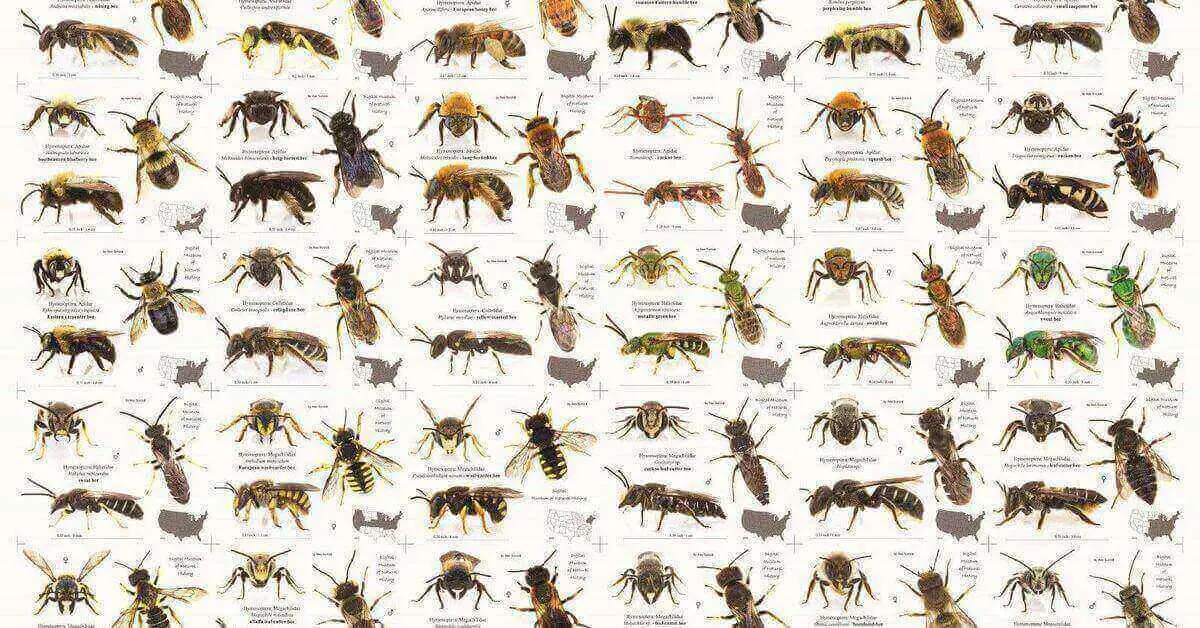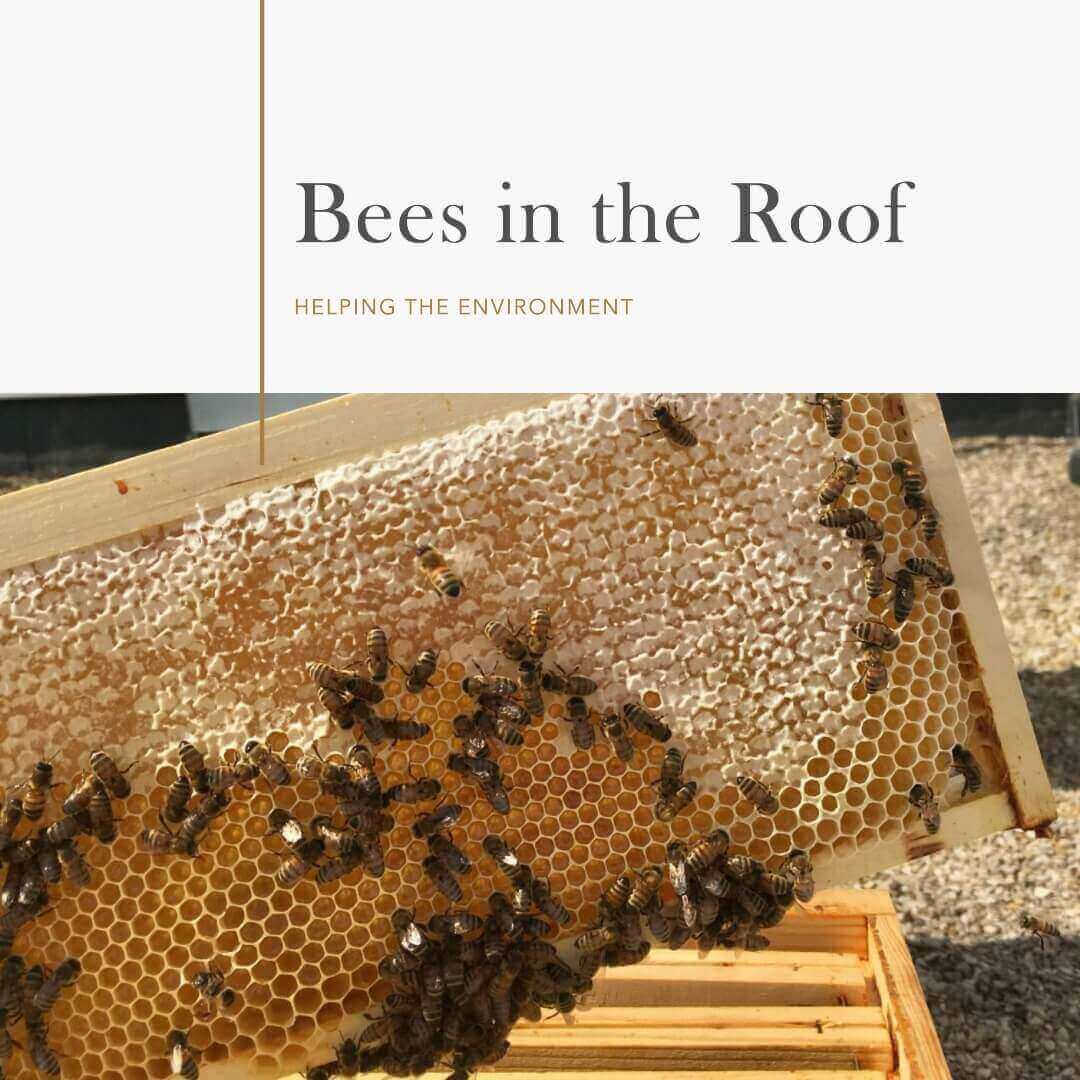The Green Furrow Bee is a ground-nesting bee species that can be found in various habitats, including meadows, fields, gardens, and woodlands. It prefers areas with loose soil or sandy substrates, as these provide suitable conditions for constructing nests. Andrena aeneiventris is native to North America and can be found throughout the continent. Its range extends from southern Canada, covering the eastern and central United States, all the way to the Gulf Coast region. This species has adapted to different climates and can thrive in both temperate and subtropical regions.
Physical Characteristics of Andrena aeneiventris
Andrena aeneiventris possesses distinctive physical characteristics that set it apart from other bee species.
Appearance and size
This bee species displays sexual dimorphism, with females and males exhibiting noticeable differences in appearance. Female Green Furrow Bees are typically larger, measuring around 10 to 12 millimeters in length, while males are slightly smaller, ranging from 8 to 10 millimeters.
Coloration and markings
The Green Furrow Bee derives its name from the vibrant metallic green coloration on its body, which is most prominent in females. Males, on the other hand, have a less intense green hue. Both genders feature black or dark brown bands on their abdomens, providing additional contrast to their striking coloration.
Pollination Role
Pollinators play a crucial role in maintaining healthy ecosystems and supporting plant diversity. Andrena aeneiventris contributes significantly to the process of pollination.
Andrena as a pollinator
Green Furrow Bee is a valuable pollinator, known for its efficiency and effectiveness in pollinating a wide range of flowering plants. As the Green Furrow Bee visits flowers in search of nectar and pollen, it inadvertently transfers pollen grains from the male to the female parts of the flowers it visits, aiding in fertilization.
Behavior and Life Cycle
Understanding the behavior and life cycle of Andrena aeneiventris provides insights into its fascinating biology.
Nesting behavior
Andrena aeneiventris is a solitary bee species, meaning that each female constructs and provisions her own nest independently. Females excavate tunnels in the ground, often in sandy or loose soil, where they create cells for their eggs. These cells are stocked with a mixture of pollen and nectar as food for the developing larvae.
Foraging habits
Green Furrow Bees are active foragers and visit a variety of flowering plants for sustenance. They primarily feed on nectar, which provides them with energy, and collect pollen as a protein source for their offspring. Their foraging activities contribute to pollination and plant reproduction.
Related Articles:
- Anthidium manicatum biography.
- How long does a bee sting last?
- Beehive vs Wasp Nest: How to difference.
Reproduction and life cycle stages
After mating, female Andrena aeneiventris bees begin constructing their nests. They lay eggs in individual cells, each containing a supply of pollen and nectar for the developing larvae. Once the eggs hatch, the larvae feed on the provisions and undergo metamorphosis, eventually emerging as adult bees. The life cycle of Andrena aeneiventris spans several weeks to several months, depending on environmental conditions.
Threats to Andrena aeneiventris
Several factors pose threats to the survival and well-being of Andrena aeneiventris populations.
Habitat loss and fragmentation
Urbanization, agriculture, and land development have led to the loss and fragmentation of natural habitats, reducing the availability of suitable nesting sites and forage resources for Green Furrow Bees. As their habitats diminish, the populations of these essential pollinators decline.
Pesticide exposure
The widespread use of pesticides, particularly insecticides, poses a significant threat to Andrena aeneiventris and other bee species. Pesticides can directly affect bee health, causing mortality or impairing their reproductive capabilities. Additionally, these chemicals can contaminate the bees’ food sources, further compromising their well-being.
Climate change
Rapid changes in climate patterns and extreme weather events can impact the phenology of flowering plants and disrupt the synchrony between plant blooming and bee emergence. As a result, the availability of nectar and pollen resources may be compromised, affecting the survival and reproductive success of Andrena aeneiventris.
Conservation Efforts
To safeguard the populations of Andrena aeneiventris and promote their conservation, various efforts are being undertaken.
Protecting natural habitats
Preserving and protecting natural habitats, including meadows, woodlands, and other areas with suitable nesting sites and floral resources, is crucial for the long-term survival of Green Furrow Bees. Conservation organizations and land managers are working towards establishing protected areas and implementing sustainable land management practices.
Creating bee-friendly environments
Individuals and communities can contribute to the conservation of Andrena aeneiventris by creating bee-friendly environments. Planting a diverse array of native flowering plants in gardens, parks, and green spaces provides essential forage resources for bees and supports their populations.
Promoting awareness and education
Raising awareness about the importance of pollinators and the threats they face is vital for garnering support for their conservation. Educational programs, public outreach campaigns, and community initiatives can help spread knowledge and inspire action to protect Andrena aeneiventris and other pollinator species.
Interactions with Humans
Andrena aeneiventris has both positive and potentially challenging interactions with humans.
Benefits of Andrena aeneiventris
As efficient pollinators, Green Furrow Bees contribute to the productivity and abundance of flowering plants, including many crops that rely on insect pollination. Their activities help ensure food security, promote biodiversity, and enhance ecosystem resilience.
Potential conflicts
In certain situations, conflicts can arise between Andrena aeneiventris and humans. For example, their nesting activities in lawns or high-traffic areas might result in inconveniences or safety concerns. However, adopting alternative management strategies, such as creating designated bee-friendly areas, can help mitigate such conflicts and promote coexistence.
Summary
Andrena aeneiventris, the Green Furrow Bee, is a fascinating bee species with a significant role in pollination. Understanding its habitat, distribution, physical characteristics, behavior, threats, and conservation needs can aid in the protection of these important pollinators. By taking proactive measures to preserve their habitats, promote awareness, and create bee-friendly environments.




